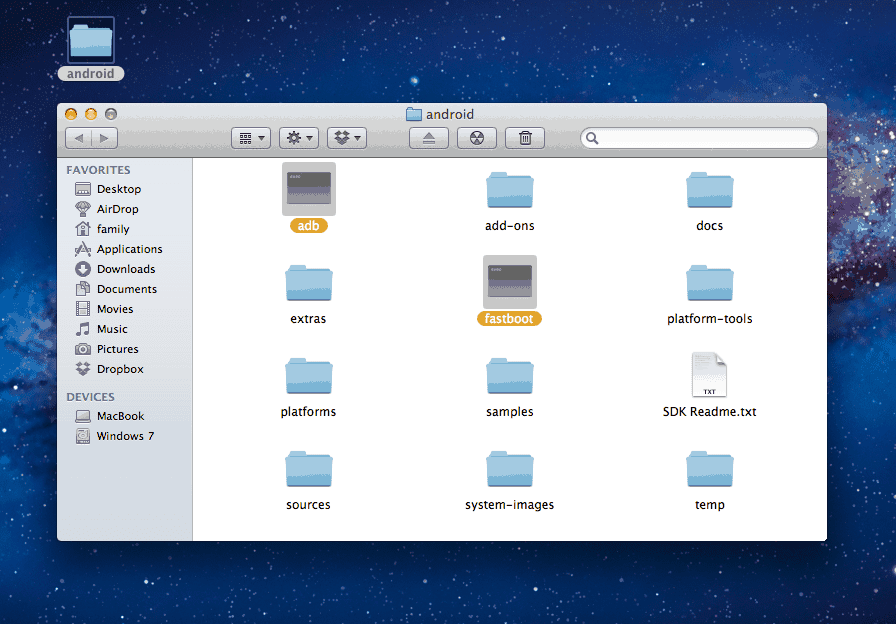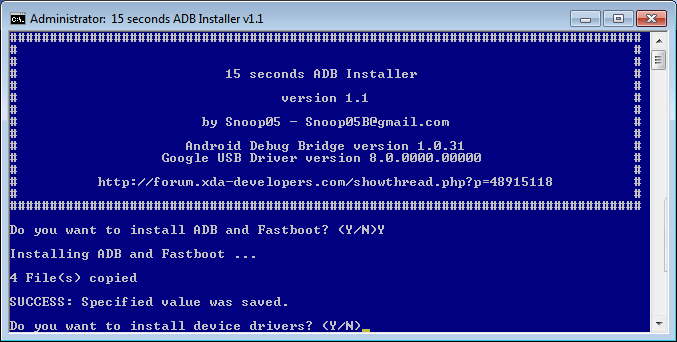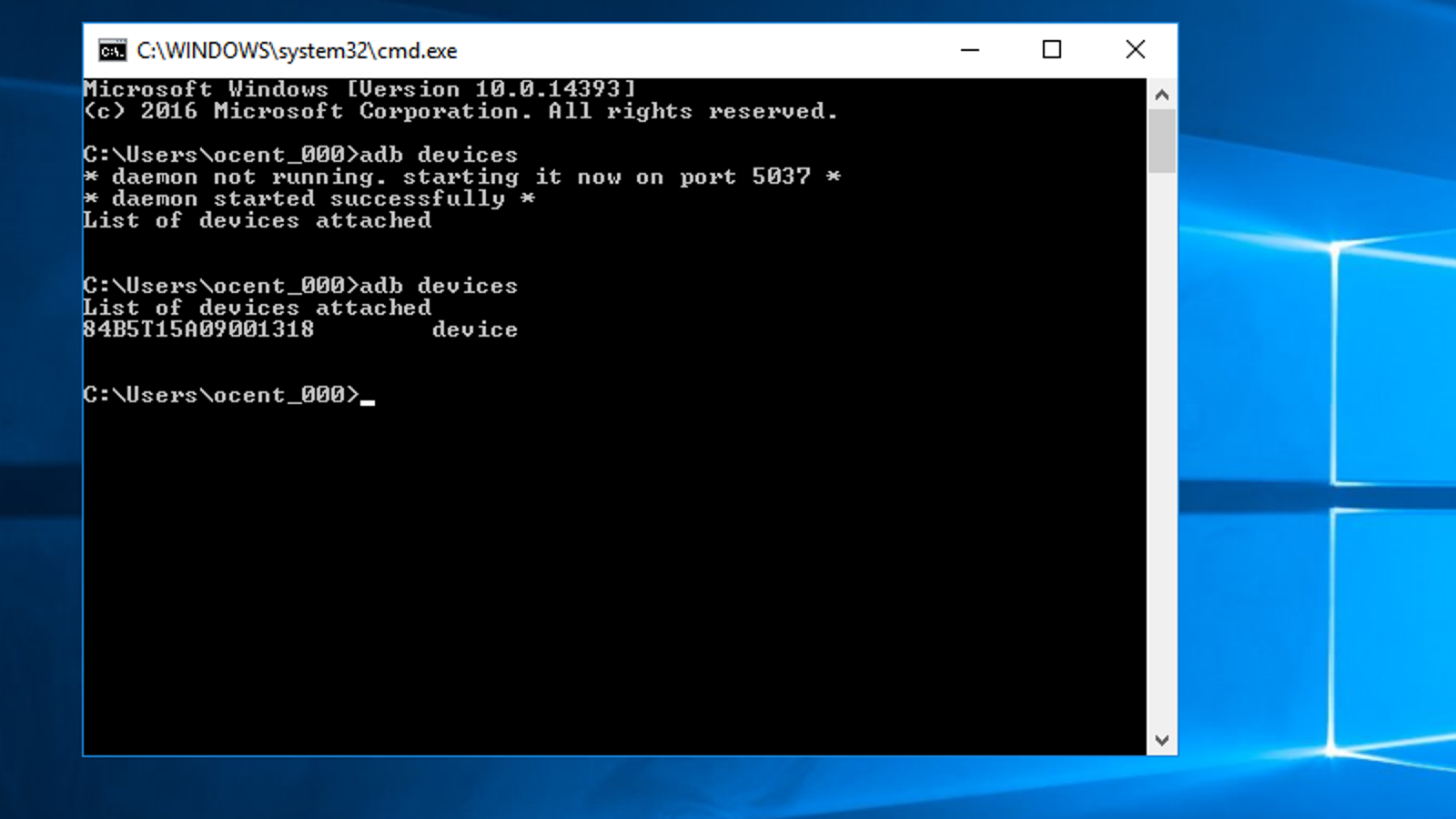Rooting an Android device can be a daunting (and annoying) task sometimes, especially if you’re not a rooting expert or not up-to-date with current do’s and don’ts. However, the benefits of having root access still convince many Android users to go through the process of unlocking their bootloader and rooting their phone.
Download the latest version of ADB and fastboot. Download the latest version of ADB and fastboot. The simplest way to use adb command on your Mac systems would be to add the path to the platform-tools (where adb lives) into your bashprofile. Steps to add the adb path: 1. Open the bashprofile: This can be done by using the following commands. Open /.bashprofile. This opens up the bashprofile in an editor.
Before starting the actual process, you need to have ADB (Android Debugging Bridge) and Fastboot installed on your system. ADB is a command-line based tool that allows a connection between your computer and an Android device. Fastboot is not really a tool but a protocol that allows system image modifications over a USB connection.
Most rooting guides don’t really go into detail when it comes to installing ADB and Fastboot. For that reason, many rooting beginners immediatel feel lost and tend to give up. If you don’t have a clue how to set up ADB and Fastboot in order to root your device, then you’re in the right place. This guide will show you how to install these tools on both Mac OS X and Windows.
Get ADB and Fastboot on your computer with Android Studio
There are several ways to set up ADB and Fastboot. For beginners, the easiest way is to install Android Studio which includes all important SDK tools.
Installing Android Studio on Windows

- Launch the .exe file that you downloaded and follow the setup wizard.
- Once the installation is successful check if you can find a folder called “platform-tools” in Users<user>sdk. In this folder, you should find two files called “adb” and “fastboot”.
- That’s it! Skip the Mac installation part below and see how you can use ADB and Fastboot inside a command line window.
Installing Android Studio on Mac OS X
- Launch the downloaded .dmg file.
- Add Android Studio to your applications (drag & drop).
- Open Android Studio and go through the installation process.
- Once that’s finished, you can find ADB and Fastboot in this directory: /Users/<user>/Library/Android/sdk/. If you don’t see your library folder, make sure to switch on its visibility in the view options (right click in the finder window).
How to use ADB and Fastboot in a command line tool

Now that you have the necessary SDK tools installed, you need to know how you can use them to connect to your Android device. All you need to do is start up a command line tool like Terminal on OS X or Windows’ Command Prompt and change into the directory where ADB and Fastboot are located.
On Windows, you can simply have the platform-tools folder (located inside the sdk folder) open and make a right mouse click while holding down shift (shift + right click). Then select “Open command window here” which will fire up a command prompt window with the platform-tools directory selected.
On Mac OS X, fire up a Terminal window. Now you need to change the directory to the platform-tools folder inside the sdk folder. To do that, type ‘cd’ followed by a space and then drag and drop the ‘platform-tools’ folder into the Terminal window. That will enter the exact path to the folder. Now, execute the command by hitting enter. It should look like in the screenshot below
With that setup, you should be able to access your Android device using ADB. To check if ADB itself is working correctly, try the following command:
If you see something like “Android Debug Bridge version 1.0.32” then ADB was successfully installed.
To check if you have a working connection to your Android device, execute the following line after enabling USB debugging in the developer settings on your device:
This should display your device’s serial number together with the word “device”.
Now, you’re ready to actually start rooting your device! I hope this guide was easy to follow and helped you get ADB and Fastboot set up. If you have any questions or issues, let us know in the comments!
ADB and Fastboot are multi-purpose command-line tools for Android that can be used via Windows, Mac, and Linux. If you try to use ADB commands in the Mac terminal without setting up ADB and Fastboot platform tools, you’ll get errors like “adb command not found”, and “fastboot command not found” on Mac. In this tutorial, I’ll be showing you how you can install and use Android SDK Platform-tools on Mac.
Whether you want to backup your Android device, debug it, sideload an APK, unlock the bootloader, install an OTA update zip, uninstall system apps, root, and flash TWRP recovery, tweak device settings, or gather key information about your device, ADB and Fastboot are essential tools. If you own an Android smartphone or tablet and don’t have any clue as to how you can install and use ADB and Fastboot on your Mac, this tutorial is just for you.
ADB and Fastboot Platform-Tools for Mac
In order to install ADB and Fastboot for Mac, there first thing you need to do it to download the latest Android SDK Platform-tools for Mac.
Having downloaded the SDK Platform-tools for Mac, you’ll need to extract the zip file.
Please be informed that ADB or Fastboot tools can’t be installed as a program or app on macOS. If you double-click the ‘adb‘ executable file, you’ll get the following error in the Mac Terminal.
“adb” cannot be opened because the identity of the developer cannot be verified or confirmed.
You’ll get the same error if you or try to run ‘fastboot‘ on Mac. Therefore, it’s important that you set up ADB and Fastboot correctly.
ADB or Fastboot Not Found on Mac Error
There is another scenario where you may get one of the following errors in the Mac Terminal.
adb: command not found

fastboot: command not found
adb devices not found
Whether you get the “adb command not found mac” or “fastboot command not found mac” error, it’s because you aren’t executing the ADB commands in the Mac Terminal the way you’re supposed to. I have already written a guide to fix ADB or Fastboot is not recognized error on Windows, and in this guide, we’ll see how to solve this issue on Mac.
Installing ADB and Fastboot on Mac
Being a lifelong Windows user, I didn’t know how to use ADB commands in Mac Terminal. I had to google about it after getting my Macbook Pro. At first, one may think that doing certain things are more complicated on Mac than Windows but once you get familiar with it, things become easy.
If you having a hard time using ADB or Fastboot commands on your Mac, follow the steps below to learn the correct way to set up and use them.

Method 1: Drag ‘Platform-tools’ Folder to Terminal
- Download the latest SDK Platform-tools.zip file for Mac from above.
- Extract the Zip file using Mac’s default Archive Utility app. you’ll have a new folder called ‘platform-tools‘ on your desktop.
- Now, click on the Go option on the Mac Finder and select Utilities.
- You’ll find Terminal among the list of Mac Utilities. Double-click it to launch the Mac terminal window.
- When the Terminal is launched, click on the ‘platform-tools‘ folder icon, hold the Command button and drag it to the terminal window.
- Doing so will CD (change directory) or set the Terminal’s path to the ADB and Fastboot files on your Mac.
You can now execute any ADB or Fastboot command without any error.
Method 2: Type or Paste Folder Path in Terminal
As you saw above. you must add the ‘platform-tools’ folder path to the Mac Terminal to run ADB and Fastboot commands. You can also do that by either manually typing the path to the folder containing ADB and Fastboot files or just by copying and pasting the folder path in the terminal. You can read my tutorial describing 5 ways to copy file and folder path on Mac OS X.

- Launch the Terminal by navigating to Go > Utilities on your Mac.
- Now type the path of the ‘platform-tools‘ folder and press the Enter key.
- Alternatively, you can press the Option key and right-click on the folder icon and select Copy “platform-tools” as Pathname in the context menu and then paste the path in the Terminal.
You are all set to issue ADB commands in the Mac Terminal and you won’t get the ‘adb command not found‘ error. To verify that you have done everything properly, type the following command, and press the Enter key.
If you want an easier way to install and use ADB and Fastboot, read my detailed tutorial on adding ADB to a path on Mac to enjoy global ADB access.
Using ADB and Fastboot Commands in Mac Terminal
Now that you have properly set up ADB and Fastboot on your Mac, let’s see how we can run commands.
- Go to the Developer Options on your Android device and enable USB debugging.
- Now, connect your Android device to your Mac. You should also extend the screen lock time out from display settings on your phone or tablet.
- Open the Mac Terminal using any of the 3 methods I described above and issue the following command.
- Keep an eye on your Android phone’s display as you run the above command and authorize ADB or USB debugging on your device by selecting Allow when prompted.
- You’ll see your devices listed in the Mac terminal window. It means that ADB daemon is ready to communicate with your device.
Adb Download For Windows 10
Are you aware of the powerful features of ADB and Fastboot and the tasks you can perform using commands? Don’t forget to check out my huge list of commands with an explanation.
